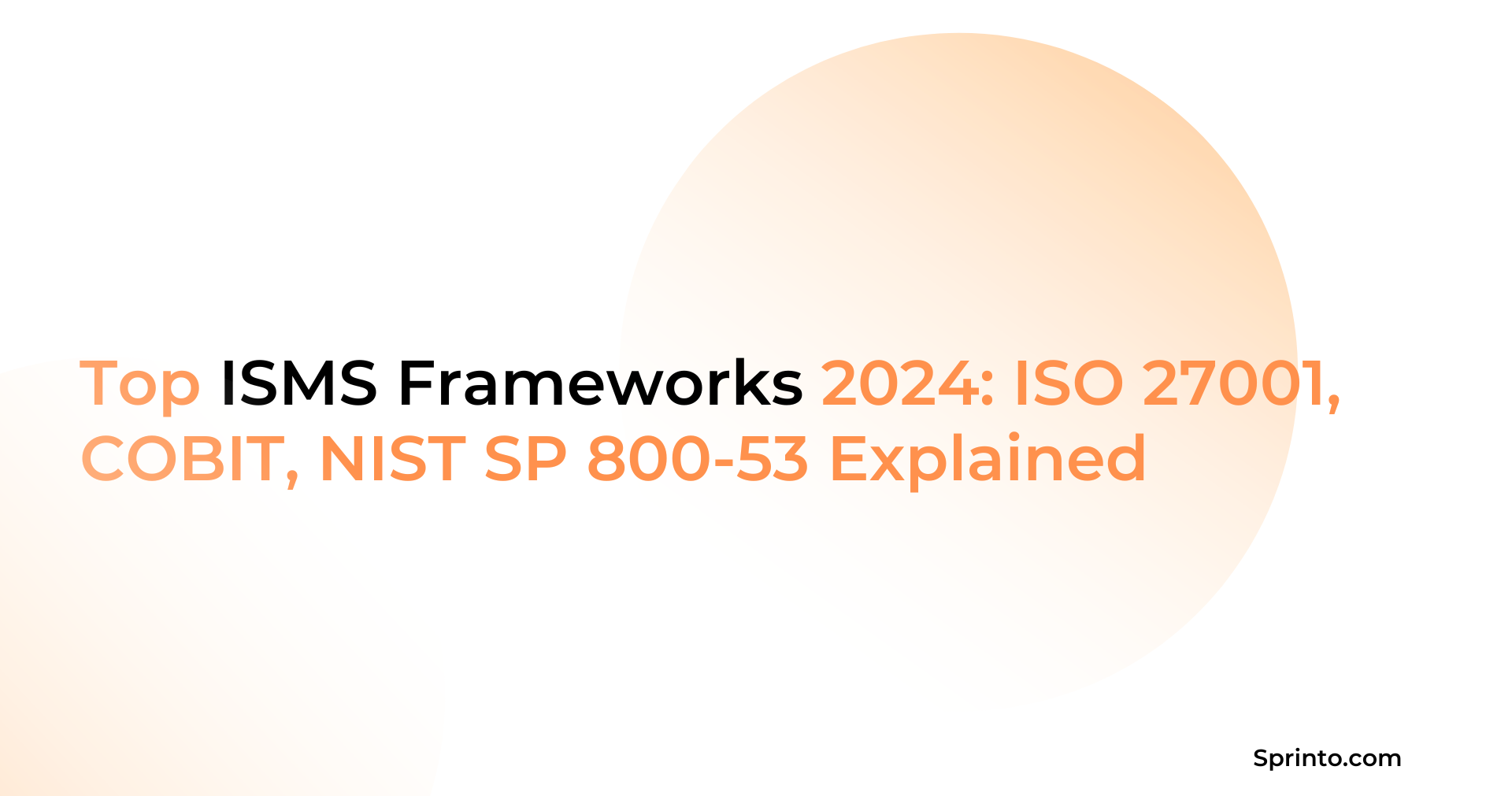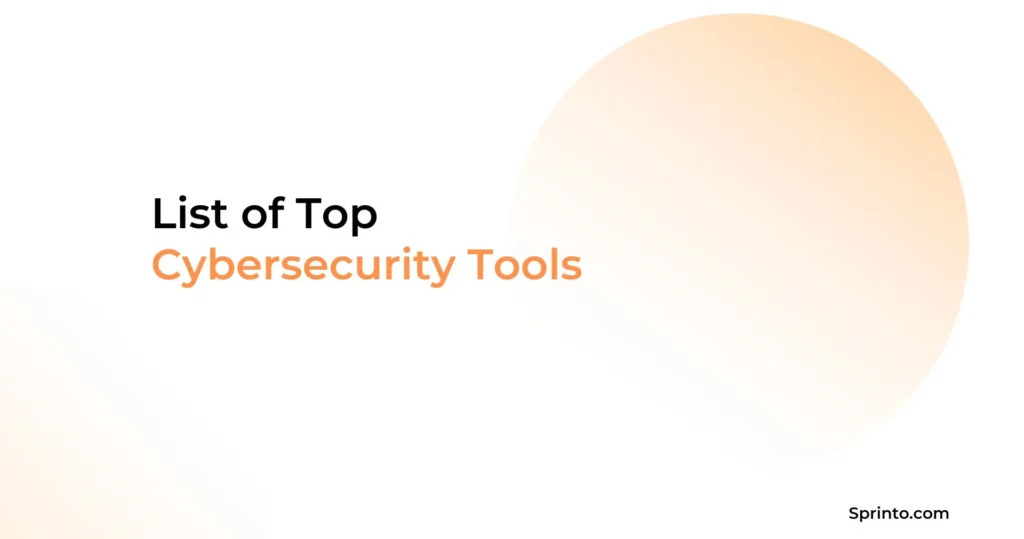One of the best ways to adhere to security best practices is using a compliance framework. These guidelines offer a practical, step-by-step, and holistic approach to manage, monitor, implement, and maintain your security objectives. ISMS frameworks are the gold standard of improving posture and gaining customer trust.
Let’s understand the most popular ISMS frameworks in detail—the requirements, who it is meant for, and how to choose the right one for your business.
What is an ISMS framework?
An Information Security Management System (ISMS) framework is a set of policies, processes, and practices that helps organizations manage and minimize the risks that can compromise the integrity and confidentiality of sensitive data.
An ISMS framework aims to ensure business continuity and reduce the impact of incidents through a systematic approach that helps to implement, manage, and maintain it. The goal of an ISMS is to minimize the impact of breaches through increased people accountability, enhanced processes, and systems to identify technological gaps.
List of ISMS frameworks in 2024
Adopting an ISMS framework is becoming a non-negotiable for companies that process sensitive client and customer data. Here are the top ISMS frameworks you should consider in 2024:
ISO/IEC 27001:2022
The most popular, globally-accepted standard developed around an ISMS is the ISO/IEC 27001:2022 framework (updated from ISO/IEC 27001:2013). It provides a flexible approach to information security management. It helps to continuously improve information systems by adhering to industry standards and best practices.
The framework details 114 controls that organizations must implement to gain certification. It is not compulsory to implement all of the controls. However, you are expected to choose the ones applicable to your information system.
You can conduct a gap analysis to know which controls are appropriate for your information system.
1. Information Security Policies
2. Organization of Information Security
3. Human Resources Security
4. Asset Management
6. Cryptography
7. Physical and Environmental Security
8. Operational Security
9. Communications Security
10. System Acquisition, Development, and Maintenance
11. Supplier Relationships
12. Information Security Incident Management
13. Information Security Aspects of Business Continuity Management
14. Compliance
Download the ISO 27001 gap analysis worksheet to determine the right Annex A controls.
ISO 27001 lists seven compulsory clauses to get certified. These are:
- Clause 4: Context of the organization—This clause requires top management to evaluate the factors affecting ISMS goals, understand stakeholder needs, and create a scoping statement.
- Clause 5: Leadership – According to this clause, management oversees ISMS activities and ensures it is aligned with the organization’s goals and support activities. At this stage, policies need to be developed, and roles are to be assigned.
- Clause 6: Planning – This clause aims to create a roadmap on mitigating, reducing, or preventing incidents using internal controls. It is also vital to develop a risk assessment process based on Annex 6.1.3.
- Clause 7: Support – Upper management needs to appoint control owners who understand the policies in-depth. It is also vital that a plan to communicate the necessary information to internal and external stakeholders is developed.
- Clause 8: Operations—The organization implements risk controls, conducts risk assessments, and treats the identified risks.
- Clause 9: Performance evaluations – Security teams conduct an internal audit of the controls and get the management to review the results.
- Clause 10: Continuous Improvement – This clause mandates companies to continuously improve the ISMS and actively manage non-conformities.
ISO 27001 is a part of the ISO 27000 family of standards consisting of about 20 standards and substandards, with ISO 27001 at its core. Other standards in this family, like ISO 27002, ISO 27004, and ISO 27005, draw references and provide guidelines to implement a component of ISMS based on its requirements.
Here’s lead auditor, Devika, explaining foundational elements of an ISO 27001 compliant ISMS system.
COBIT
COBIT (Control Objectives for Information and Related Technologies) is a framework developed by the ISACA (Information Systems Audit and Control Association). It aims to aid IT managers in improving, developing, monitoring, governing, and managing IT infrastructure.
Unlike frameworks like NIST and ISO 27001, which focus on protecting information security, COBIT is designed to align IT processes with the business’s specific goals. The framework covers about 200 controls across 37 categories.
COBIT outlines six principles that enterprises can use to govern their IT processes. These are:
- Offer stakeholder value: Build processes and make governance decisions in a way that adds value to stakeholders, business partners, and even customers.
- Holistic approach: Your governance system should be built in a way that holistically combines the components so they work harmoniously.
- Dynamic governance system: Added to the latest version released in 2019, this principle enables businesses to keep up with the continuously changing environment.
- Separation of governance and management: COBIT recognizes the need to differentiate between a governance system and management as they serve separate purposes. Governance is concerned with monitoring organizational goals and management involves meeting stakeholder needs.
- Cater to changing enterprise needs: To keep up with changing enterprise needs, the framework encourages using design factors (technology or strategy) to cater to the governance system.
- End-to-end governance system: Any strategy or process should apply uniformly across the organization’s hierarchical and departmental structures. An end-to-end process ensures accountability and consistency across the entire organization.
Elevate your IT governance with ISACA’s comprehensive framework
NIST SP 800-53
NIST SP 800-53 (Security and Privacy Controls for Information Systems and Organizations) establishes privacy and security controls for federal information systems that process sensitive government data. While it is compulsory for federal systems, non-federal systems and organizations can also use the NIST SP 800-53 framework to bolster their security posture, thanks to its comprehensive, rigorous, and flexible nature.
Also check: NIST 800-53: A Complete Guide to Compliance – Sprinto
The NIST 800 53 framework covers five areas of security to help organizations proactively manage and mitigate risks from their inception to elimination.
- Identify: Gain a deep understanding of the organization to protect systems, data, and other assets.
- Protect: Implement appropriate and necessary safeguards to protect critical infrastructure.
- Detect: Develop and implement appropriate measures to identify vulnerabilities.
- Respond: Create effective measures to take action against security incidents.
- Recover: Develop and implement appropriate measures to ensure business continuity and restore damages.
The controls of NIST 800 53 aims to protect information systems, organizations, and individuals by enforcing federal laws, directives, policies, and standards. Most of these controls are designed to meet the fundamental security measures of businesses across all sectors.
The control catalog covers 20 domains and over 300 subdomains. While these controls help you build a security architecture and incorporate the best practices, involve a lengthy and complex implementation process. The control families of NIST 800 53 are:
- AC – Access Control
- AT – Awareness And Training
- AU – Audit And Accountability
- CA – Security Assessment And Authorization
- CM – Configuration Management
- CP – Contingency Planning
- IA – Identification And Authentication
- IR – Incident Response
- MA – Maintenance
- MP – Media Protection
- PE – Physical And Environmental Protection
- PL – Planning
- PS – Personnel Security
- PT – PII Processing and Transparency
- RA – Risk Assessment
- SA – System And Services Acquisition
- SC – System And Communications Protection
- SI – System And Information Integrity
- SR – Supply Chain Risk Management
- PM – Program Management
Download the NIST 800 53 Controls List. Check the priority and impact level of 325 controls.
Implementing the whole host of NIST controls can be tricky without the right tools and expertise. Poor visibility can cause significant delays in certification by months beyond the schedule.
NIST 800 52 refers to a number of number of polices, standards, and regulations like FISMA, OMB A-130, ISO 15026-1, FIPS 199, and more.
The Sprinto platform is a pre-built solution that monitors controls at a granular level. It continuously scans for failing checks, alerts security teams when failures occur, offers detailed insight into the status of each control, and documents it all to enable seamless audits.
Want to learn more? Get a demo now.
How to choose the right ISMS framework?
Selecting an ISMS framework for your organization requires a lot of consideration and prep work. While most frameworks can be implemented in organizations of all sizes, generally speaking, it is not a one-size-fits-all scenario.
For example, ISO 27001 is a pretty solid choice for organizations of all sizes. But if you are a small business, NIST can be overkill—the controls and security requirements are designed for federal information systems, making them super stringent and comprehensive. Combine this with a lengthy implementation process, and you end up with a large bill that is likely to exceed your budget.
There are a number of factors that need to be kept in mind before choosing an ISMS—the type of organizational assets, history of cyber attacks, risk appetite, potential vulnerabilities, cyber threat landscape, and security risks are a few.
A trusted ISMS for auditor-grade compliance
Identifying and addressing the risks and threats facing your information systems is crucial for effective action. However, this process has traditionally been labor-intensive, involving manual review of documents and data, and is likely to take a heavy toll on your engineering bandwidth.
That’s why automated solutions like Sprinto are invaluable today. Sprinto offers a comprehensive solution to your compliance needs by streamlining the entire process—from automating compliance tasks and continuous control monitoring to mapping security controls and identifying potential gaps in your ISMS. The platform also helps you eliminate the hundreds of manhours your security teams spend on evidence collection and long audit processes.
Ready to take the first step towards faster, more effective compliance programs? Speak to our compliance experts today.
FAQs
What are the three principles of ISMS?
The three principles of an ISMS are confidentiality, availability, and integrity. All aspects of this trio should be implemented in any security infrastructure.
What should be in an ISMS framework?
The key features of an effective ISMS framework should include comprehensive risk assessment, regular audits, updated ISMS policies, meeting the applicable compliance requirements, a business continuity plan, and access control.
Anwita
Anwita is a cybersecurity enthusiast and veteran blogger all rolled into one. Her love for everything cybersecurity started her journey into the world compliance. With multiple certifications on cybersecurity under her belt, she aims to simplify complex security related topics for all audiences. She loves to read nonfiction, listen to progressive rock, and watches sitcoms on the weekends.
Explore more
research & insights curated to help you earn a seat at the table.





















